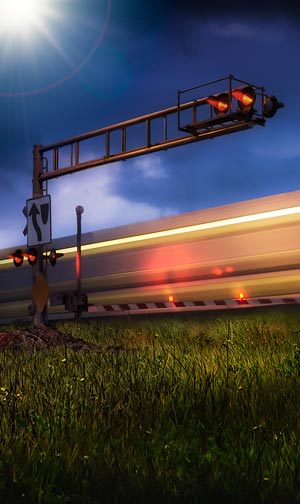Six Passengers Injured when Amtrak Train Hits 18-Wheeler at Unguarded, Dangerous CN Crossing
(Tchula, Mississippi – September 10, 2013)
Given no automatic warning of the approach of Amtrak’s New Orleans, LA-bound “City of New Orleans” passenger train at 79 mph at the Dawson Road crossing of Canadian National railroad tracks about five miles south of Tchula, MS, the driver of an 18-wheeler loaded with several tons of shelled corn narrowly escaped death Tuesday morning at about 9:30 A.M. when his trailer was divided in half by the collision that ensued, one which also derailed and heavily damaged the first locomotive of the train which was carrying 152 passengers and a crew of 11. Two train crew members were injured and four passengers were hurt, one of whom suffered a possible broken wrist, as the train miraculously missed the truck tractor but completely destroyed the corn-filled trailer, scattering its load for some distance along the tracks.
The single-track rail line, which accommodates a daily average of 18 CN freight and Amtrak passenger trains at a top allowable speed of 79 mph, parallels U.S. Highway 49 with a separation of only a few feet, and Dawson Road exits the highway at a 90-degree angle. Since both the truck and the train were going the same direction and the truck had to practically stop to negotiate the slightly-humped crossing, there was no way the driver could have seen the oncoming train, especially due to the complete lack of active protective devices such as flashing lights, bells and crossing gates. The crossing was equipped solely with a pair of standard, passive railroad cross-buck signs, which are useless in giving advance warning of a train’s approach.
Holmes County Sheriff Willie March, whose department was leading the investigation with assistance from the Mississippi State Police, noted that there is no active crossing protection at the intersection, and that the truck driver didn’t see the train coming until it was too late to take evasive action.
Amtrak passengers were delayed aboard the train for 3 ½ hours before busses could arrive to take the stranded passengers on to their destinations, as the locomotive could not be utilized to complete the trip.


